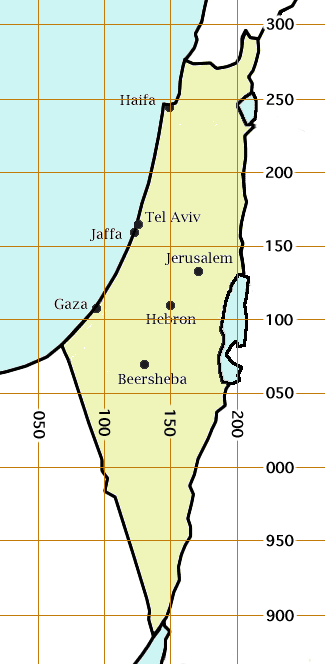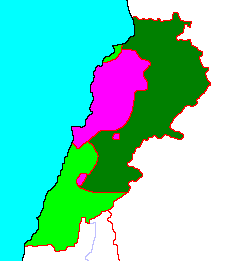|
Kfar Kila, Lebanon
Kfar Kila or Kfarkila (, also, ''Kfarkila'', ''Kfarkela'', ''Kafarkela'') is a municipality in Southern Lebanon. The majority of its population are Shia Muslims. Etymology The name Kafarkila means "the village of the pasturage". History Al-Maqdisi (c. 945/946 – 991) noted that Kafr Kila (called ''Kafar Kila'') was "A place lying a day's march from Tabariyyah". Ottoman era In the 1596 tax records, it was named as a village, ''Kafr Kuk'', in the Ottoman ''nahiya'' (subdistrict) of Tibnin, part of Safad Sanjak, with a population of 31 households and 2 bachelors, all Muslim. The villagers paid taxes on agricultural products, such as wheat, barley, olive trees, goats, beehives and winter pastures; a total of 4,700 akçe.Hütteroth and Abdulfattah, 1977, p. 184 In 1838, Eli Smith noted Kafr Kila's population as Metawileh. In 1875 Victor Guérin visited and noted that the village had about 1,000 Metawileh inhabitants. He further noted: "The mosque and several of the houses are ... [...More Info...] [...Related Items...] OR: [Wikipedia] [Google] [Baidu] |
Palestine Grid
The Palestine grid was the geographic coordinate system used by the Survey Department of Palestine. The system was chosen by the Survey Department of the Government of Palestine in 1922. The projection used was the Cassini projection, Cassini-Soldner projection. The central Meridian (geography), meridian (the line of longitude along which there is no local distortion) was chosen as that passing through a marker on the hill of Mar Elias Monastery south of Jerusalem. The false origin (zero point) of the grid was placed 100 km to the south and west of the Ali el-Muntar hill that overlooks Gaza City, Gaza city. The unit length for the grid was the kilometre; the British units were not even considered. At the time the grid was established, there was no intention of mapping the lower reaches of the Negev Desert, but this did not remain true. Those southern regions having a negative Easting and northing, northing coordinate then became a source of confusion, which was solved by ad ... [...More Info...] [...Related Items...] OR: [Wikipedia] [Google] [Baidu] |
Safad Sanjak
Safed Sanjak (; ) was a '' sanjak'' (district) of Damascus Eyalet ( Ottoman province of Damascus) in 1517–1660, after which it became part of the Sidon Eyalet (Ottoman province of Sidon). The sanjak was centered in Safed and spanned the Galilee, Jabal Amil and the coastal cities of Acre and Tyre. The city of Safed was made up of Muslim and Jewish townspeople. At the same time the rest of the sanjak was populated by Sunni Muslims, Bedouins, Metouali Twelver Muslims, and Jewish and Druze peasants. Territory and demographics The territory of Safed Sanjak consisted of the area between the Zahrani River in the north to Mount Carmel (near Haifa) in the south, and the area between the Sea of Galilee in the east and the Mediterranean Sea in the west. Besides Safed, it included the port cities of Acre and Tyre and the entire Galilee and Jabal Amil area. The district had a mixed population of peasants and Bedouin. The inhabitants of the Jabal Amil region were predominantly Shia ... [...More Info...] [...Related Items...] OR: [Wikipedia] [Google] [Baidu] |
Syrian Occupation Of Lebanon
The Syrian occupation of Lebanon lasted from 31 May 1976, beginning with the Syrian intervention in the Lebanese Civil War, until 30 April 2005. This period saw significant Syrian military and political influence over Lebanon, impacting its governance, economy, and society. During the occupation, tens of thousands of Lebanese civilians were abducted and forcibly disappeared in Ba'athist Syrian prison camps. The whereabouts of an estimated 30,000 of them remain unknown. The occupation ended following intense international pressure and the assassination of former Lebanese Prime Minister Rafic Hariri. The legacy of the occupation continues to influence Lebanese-Syrian relations and Lebanon's internal political dynamics. Summary In January 1976, Syria proposed restoring the pre-civil war limits on the Palestinian guerrilla presence in Lebanon. This proposal was welcomed by Maronites but rejected by the Palestinian guerrillas. By October 1976, during an Arab League meeting ... [...More Info...] [...Related Items...] OR: [Wikipedia] [Google] [Baidu] |
Lebanese Civil War
The Lebanese Civil War ( ) was a multifaceted armed conflict that took place from 1975 to 1990. It resulted in an estimated 150,000 fatalities and led to the exodus of almost one million people from Lebanon. The religious diversity of the Lebanese people played a notable role in the lead-up to and during the conflict: Lebanese Christians and Lebanese Sunni Muslims comprised the majority in the coastal cities; Lebanese Shia Muslims were primarily based throughout southern Lebanon and in the Beqaa Valley in the east; and Lebanese Druze, Druze and Christians populated the country's mountainous areas. At the time, the Lebanese government was under the influence of elites within the Maronite Christian community. The link between politics and religion was reinforced under the Greater Lebanon, French Mandate from 1920 to 1943, and the country's parliamentary structure favoured a leading position for Lebanese Christians, who constituted the majority of the population. However, Leban ... [...More Info...] [...Related Items...] OR: [Wikipedia] [Google] [Baidu] |
Lebanese Government
Lebanon is a Parliamentary republic, parliamentary Democracy, democratic republic within the overall framework of Confessionalism (politics), confessionalism, a form of consociationalism in which the highest offices are proportionately reserved for representatives from certain religious communities. The constitution of Lebanon grants the people the right to change their government. However, from the mid-1970s until the parliamentary elections in 1992, the Lebanese Civil War (1975–1990) precluded the exercise of political rights. According to the constitution, direct elections must be held for the parliament every four years. However, after the parliamentary election in 2009 Lebanese general election, 2009 another election was not held until 2018 Lebanese general election, 2018. The Parliament of Lebanon, Parliament elects a President of Lebanon, president every six years to a single term. The president is not eligible for re-election. The last presidential election was in 20 ... [...More Info...] [...Related Items...] OR: [Wikipedia] [Google] [Baidu] |
PEF Survey Of Palestine
The PEF Survey of Palestine was a series of surveys carried out by the Palestine Exploration Fund (PEF) between 1872 and 1877 for the completed Survey of Western Palestine (SWP) and in 1880 for the soon abandoned Survey of Eastern Palestine. The survey was carried out after the success of the Ordnance Survey of Jerusalem by the newly-founded PEF, with support from the War Office. Twenty-six sheets were produced for "Western Palestine" and one sheet for "Eastern Palestine". It was the first fully scientific Cartography of Palestine, mapping of Palestine. Besides being a geographic survey the group collected thousands of place names with the objective of identifying Biblical, Talmudic, early Christian and Crusading locations. The survey resulted in the publication of a map of Palestine consisting of 26 sheets, at a scale of 1:63,360, the most detailed and accurate map of Palestine published in the 19th century. The PEF survey represented the peak of the cartographic work in Palestin ... [...More Info...] [...Related Items...] OR: [Wikipedia] [Google] [Baidu] |



